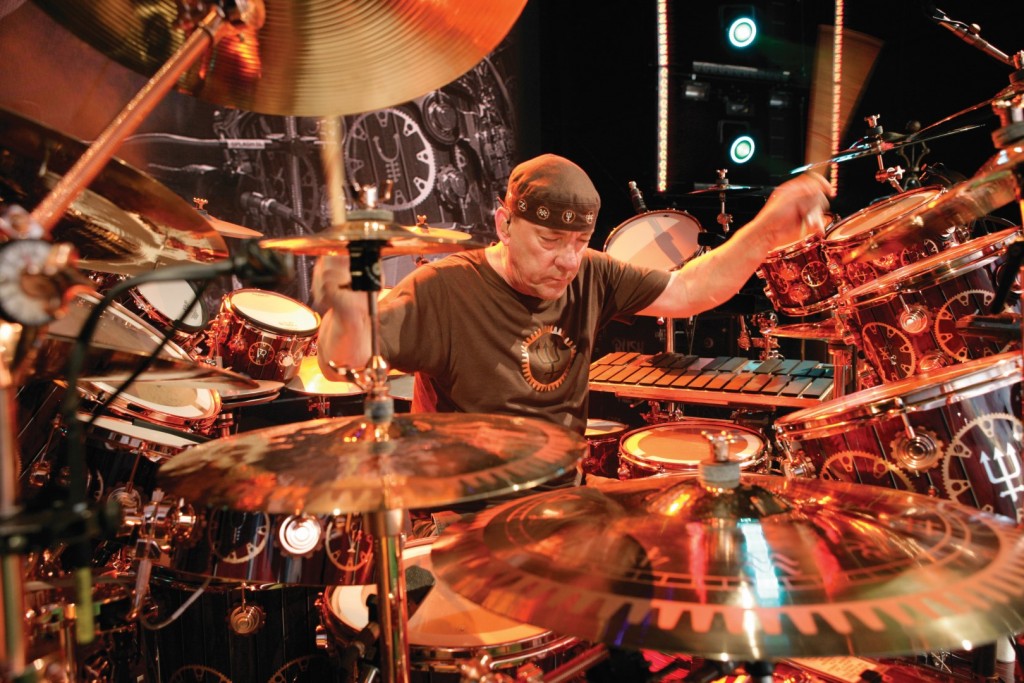
The drum solo from jazz to rock
By Caroline Ho, Arts Editor
What’s the most essential component of music? Your instinct might be to say melody, because without a tune, how can one have any music? But even more important is rhythm. A single note or a cluster of notes can’t create music without being played, and to be played they need to be set to a tempo. Even a simple beat can stand on its own without a melody. We might not realize the musicality of percussion by itself, and instead hear it as a complementary backdrop for other instruments, which is why the drum solo stands out as a moment of acknowledgment for this vital instrument.
Modern rock drumming owes its roots to jazz music of the early 20th century. In the 1920s and ’30s, jazz drummers like Baby Dodds and Chick Webb had immense impacts on future generations of drummers, with Dodds’ distinctive “shimmy beat” and Webb’s flashy, powerful style of swing. But for all their skill and influence, these and other early jazz drummers didn’t really play solos—they were recognized for their work in backing up other musicians and playing breaks.
Gene Krupa was the drummer who really brought a spotlight onto the instrument. Embodying all the vivacity of the Big Band Era, his drumming was as distinctive as it was flashy, and he’s usually recognized as the person to make drum solos into a performance. Krupa was also the first to assemble and arrange the modern drum kit, made up of a snare drum, bass drum, tom-toms, and cymbals.
Another drummer superstar of jazz and big band was Buddy Rich, whose technical mastery and crazy drumming speeds astonished audiences. Rich is still acknowledged as the most technically skilled drummer ever—even though he never received any formal musical instruction or even learned to read music.
Through the ’40s and ’50s, musical trends moved from jazz to bebop and gradually into rock and roll. Jazz musicians like Max Roach and Art Blakey pioneered new techniques of combining time signatures and shifting accents to create complex rhythms. The influences of these artists can be heard not just in jazz, but also in the styles of many early rock drummers who were taught and inspired by jazz musicians.
The drum solo in rock was ushered in by Ginger Baker, drummer of the British band Cream (which also included lead guitarist Eric Clapton). Cream’s 1966 album Fresh Cream included the track “Toad,” an instrumental song that was almost entirely a drum solo, one of the first of such recorded in rock. The album version is five minutes long, but there are also live recordings of Baker playing “Toad” for well over 10 minutes.
“Toad” opened the doors to a flood of drum solos in rock and metal. One of the most notable was John Bonham of Led Zeppelin. The band’s instrumental track “Moby Dick” (1969) featured a drum solo that Bonham would sometimes play for up to half an hour in concerts. The ’60s and ’70s saw drum solos take centre stage again and again, although one notable abstainer was The Who’s Keith Moon, who allegedly thought drum solos were boring and refused to play them.
The heyday of drum solos can perhaps be encapsulated by Neil Peart, drummer of Canadian band Rush. He performed with colossal drum kits that included a variety of percussion instruments such as wind chimes and tubular bells. In the late ’70s and ’80s, Peart’s solos, which were partly composed and partly improvised, earned him a massive following.
Drum solos are, of course, still a big part of rock music today, and probably one of its most divisive aspects. Some fans love seeing their favourite drummers showcase their talents singlehandedly (or, well, four-limbed-ly). Other listeners regard solos as the epitome of self-indulgence and a tedious waste of concert time. Whatever your perception, it’s undeniable that drummers deserve recognition of their own.



